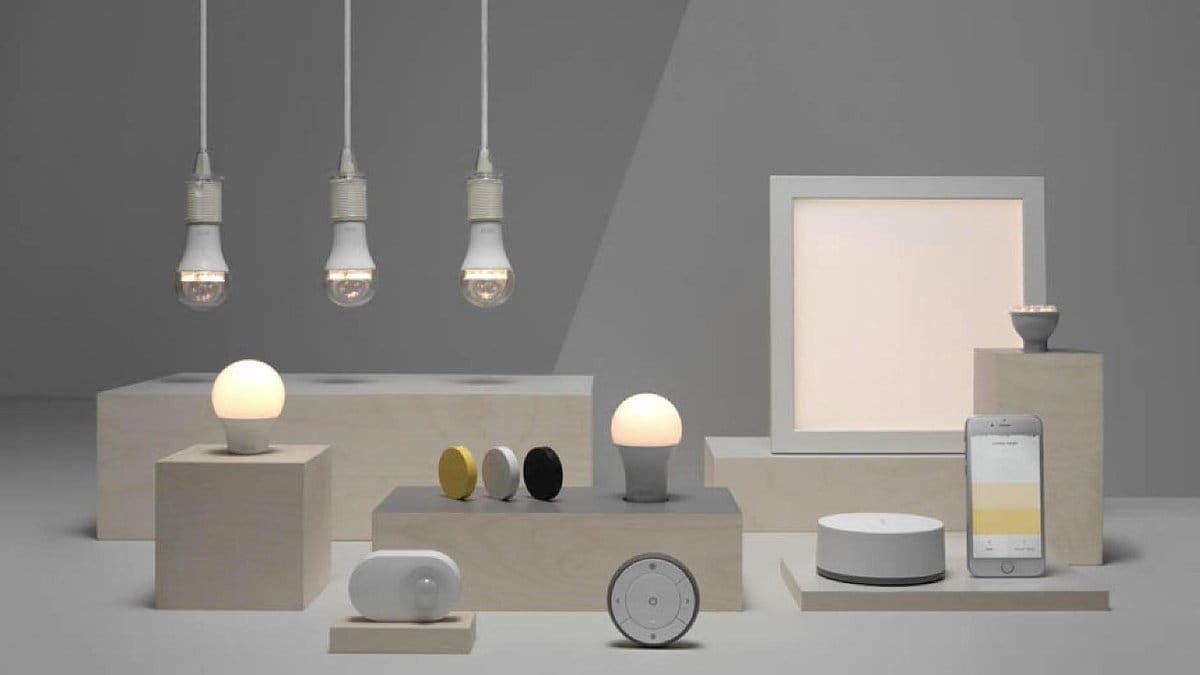The Importance of Network Coverage in the Design of a Smart Home.
Who thinks about “network coverage” and “compatibility” when buying the first smart device? You just want to get going and don’t think about what it all looks like a year from now once you’ve purchased 10 more devices (trust me, it’s going to happen) and then find out that it doesn’t all work flawlessly after all.
In today’s fast-paced world, the concept of a smart home has evolved from a futuristic dream into a tangible reality. With the integration of cutting-edge technologies, homeowners can now control various aspects of their living space with just a few taps on their smartphones or voice commands to virtual assistants like Alexa or Google Assistant.
However, the seamless operation of these smart devices hinges on a critical factor often overlooked in the design process: network coverage
Let’s delve into why network coverage is so important and how it affects the design of a smart home.

The most common reason for issues in your smart home is network coverage and compatibility or rather insufficient signal and networks getting in each other’s way.
That is why it is important to make some choices from the beginning and we have listed them below.
The design of a smart home isn’t just about choosing the latest gadgets and appliances; it’s about ensuring that these devices can communicate effectively with each other and with the user.
This is where network coverage comes into play, as it directly impacts the reliability and performance of your smart home ecosystem.
-
Device Communication (network coverage)
Most important! Smart devices need to communicate with each other to create a cohesive and efficient home automation system. Whether it’s your security cameras, thermostat, lighting, or entertainment system, these devices rely on a network connection to function correctly. Inadequate network coverage can lead to disconnections, delays, or device malfunctions, disrupting the entire ecosystem.
In the smart home industry there is not a single type of network communication (yet) – no – there is of course WiFi and there is Zigbee (very important), Zwave and bluetooth. Besides this, not al manufacturers who use this network protocols keep to the standards and made their own variant which of course, does not communicate with the rest.

There is an interesting article (English) here.
This proprietary behaviour of manufacturers is slowly fading out (thanks to the Matter protocol, see further) but still there are issues and lucky for you, we know the pitfalls to avoid.
- Security (keep things local)
Security is (or should be) a top concern for smart home owners. However, there is an abundant amount of smart devices on the market that only connect with the manufacturers server and you need have to use their app to control your device.
Did I say “your” device? A smart device that is completely depending on a connection to the server of the manufacturer is and will not be “your” device.
Network design plays a crucial role in ensuring that security cameras, door locks, and alarm systems can transmit data reliably. Weak or inconsistent network signals can leave vulnerabilities in your home’s security, potentially exposing your property and personal data to cyber threats. To keep (smart) things local, you need to know what protocol a device is using and if it can be controlled locally. There are enough manufacturers on the market that keep the standards in mind and although they use a hub or a app, the device can also be used locally with Home Assistant, the software we can build your smart home with.

Lewis from “Everything Smart Home” has made a video about local control.
Have a look at the list of Home Assistant integrations here.
-
Energy Efficiency (most savings)
Many smart home devices are designed to enhance energy efficiency. For example, a smart thermostat can adjust your heating and cooling based on occupancy and outdoor temperature. To do this effectively, these devices require a stable and robust network connection to receive real-time data. Inconsistent coverage could lead to inefficiencies, negating the purpose of these energy-saving devices.
-
User Experience (voice control & dashboards)
The ultimate goal of a smart home is to make your life easier and more convenient. However, network issues can lead to frustrating experiences, such as voice commands not being recognized, delayed responses, or apps failing to control devices. A well-designed network ensures a smooth and enjoyable user experience.
-
Future-Proofing (grow to 10, 50 or even 100 devices)
As technology advances, new smart devices and protocols emerge. A well-planned network infrastructure can adapt to these changes and support the integration of new devices seamlessly. It’s essential to consider the scalability of your network when designing your smart home.
For example take smart lighting; you will start with a few but soon discover that there are many advantages that come with smart lighting. First of all they are cheaper than you think – for approximately €10 you have an IKEA Tradri bulb or spot – and if you keep in mind that smart also means dimmable start calculating what a (not so smart) wall dimmer costs and you still have to buy dimmable bulbs, spots or strips and do all kind of complex wiring.
Oh, did I mention that you have to come out of your chair to operate a not so smart wall switch? At the end of the day there so many advantages with smart devices that you soon will be expanding more over the house.

Just for the record, all IKEA Tradfri products can be seamlessly integrated in Home Assistant without a hub.
-
Network Types (best mix of protocols
To achieve comprehensive coverage, it’s important to understand the different network types used in smart homes. Wi-Fi, Zigbee, Z-Wave, and Bluetooth are among the most common. Each has its strengths and weaknesses, and a good smart home design will incorporate the right mix of these technologies to ensure complete coverage throughout the house.
There is an extensive article here about the different protocols here compairing pro and cons.
My takeaway, pick Wifi only if you need and if you have enough coverage and only if they can be operated with local Wifi,
Take Zigbee and or Bluetooth for sensors that cannot be wired and ethernet for devices with high bandwidth like camera’s. Zigbee and especially bluetooth are battery operated and very energy efficient

Matter is on its way to conquer the smart home world (see further below) but personally I do not see the added value of matter when you run your own smart home server which by the way is the most safest and fastest way to create a network.
- Placement and Equipment (declutter and show offs)
Proper placement of routers, access points, and smart hubs is essential to maximize network coverage. Consider the layout and size of your home when determining the placement of these devices. You don’t want to see antennas sticking out in your living.
Additionally, investing in high-quality equipment can significantly enhance network reliability.
Size matters
The size of your smart home network matters. It can be a mix of Wifi and other technologies like Zigbee, Zwave, RF or Bluetooth but most frustrating are devices just too far away that they keep dropping out of the network and thus are unresponsive.
To size your network you must have an idea of what devices you want to use and contol from your smart home network. Think about camera’s, motion sensors, switches, lights, aircon’s, thermostates and so on.
Rule of thumb:
You cannot mix networks into one network. Every network technology is in fact a stand-alone network!
Wow! What now?
The answer is the use of a software application like Home Assistant that binds all of these devices together and acts as the “man in the middle”.
Have a look at the list of Home Assistant integrations here.
- Networks like Zigbee and Zwave can only have one controller. In other words, you cannot (in a simple way) have different Zigbee networks in your house communicating with each other.
- A wifi device cannot directly communicate with a Zigbee or other network technology
What is (the) Matter?
In the coming years a new standard for the smart home will be implemented called Matter. It will take another few years but this standard eliminates the issue of smart devices in different networks not able to communicate. Matter also provides a enhanced solution for coverage based on Mesh technology.
Matter has no real solution for “man in the middle” so that will remain the area where software applications like Home Assistant come in which by the way is fully compatible with Matter.
So for now we have to be careful about what devices for what and how to extend coverage.
Keep our fingers crossed that Matter will keep its promise. You will find regular updates on the Matter project on this website.



All information about the Matter Project can be found here.
Conclusion
The design of a smart home goes beyond selecting the latest gadgets. It involves creating a robust network infrastructure that supports seamless communication between devices.
Adequate network coverage ensures that your smart home operates efficiently, securely, and in a way that enhances your daily life.
When planning your smart home, don’t underestimate the importance of network coverage – it’s the invisible backbone that makes the magic happen.


